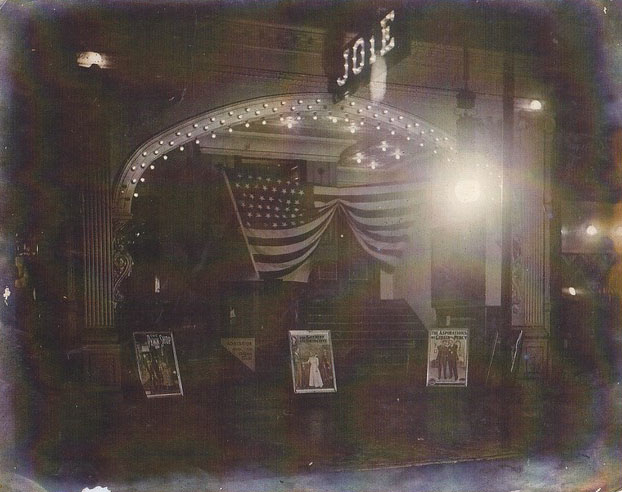Been trolling theatre ads again, a habit ingrained since kindergarten (I used to paste them on the front of the family hi-fi ... what sense did that make?). Each tell a story, no two are alike, and there's not a better indicator of selling policy in towns small or big. Speaking of which, the mid-west Mystic wish-fulfilled 1935 patrons by hosting the alleged still living badman Jesse James four times daily at fifteen cents tops (Bob Ford having back-shot him was the bunk). Would you pay a nickel times three to see Jesse finally emerge after hiding out fifty-one years? I'll say I would! Depression rurals revered bandits among them, finding much to admire in John Dillinger, Bonnie and
(Long) before there was football on television, the only way you'd catch grid action was on movie screens, and games rousing wide enough interest might even merit top-of-bill placement, as here. I dug around the net for data on the Chateau's featured Minnesota-Washington match-up, a hotly anticipated clash for sure, as Minnesota had gone undefeated for twenty-four games prior (back-to-back national titles in '34/35) and Washington was regarded as formidable. Here was a contest worthy of two reels commemoration, sport mavens having pored over the weeks' newspaper details of the Golden Gophers (
Well, here it is 1950 and we're still chasing pigskins. "Big-Screen Theater Television" was oft-rival to the free box at home, but suffered grievous in comparison with crisp 35mm projection. Customers wondered why images looked so rotten, gripes frequent enough to doom wide-spreading of TV in auditoria. Large-screen sets have only recent achieved quality-enough levels to compete with theatres, reason why so many have settled permanently at home to watch movies (me included). Once again, film noir we call classic fills a crowded bill to first-run patronage, this time in
Here's a fairly nutty early-60's bid to recover some of the loss from Alfred Hitchcock's circa 1949 Under Capricorn. You'd figure the title was "Murder Will Out" short of closer perusal, this being, of course, the merchandiser's whole idea. But note smaller print ... the distributor is "First Division Pictures, Inc." of a re-release "by Balboa Film Distributors." Quite a thicket so far as rights-holding. Of all matured Hitchcocks, Under Capricorn is the one we see least nowadays (there was a DVD from Image in 2003). Wonder if Ingrid Bergman enjoyed being tendered as "A Woman Driven By The Demons Of Hell" (though some would say Rossellini was nearly that). This ad being for a
The Joie was an
Finally, another bid to pry patronage away from televisions. This was early 1951 and every effort was made to differentiate moviegoing from the home-viewer experience. The social aspect of theatre patronage was now being emphasized. Be A Part Of It! After all, The Audience Is The Thing That Adds To The Enjoyment Of A Movie. We know there's truth in that, having watched favorites in solitude and with a crowd. The crucial difference between us and those of Golden Age attendance was fact they saw nearly everything in groups, often as not large ones. My encounters with
(4/7 --- 12:50 pm) Reader Allen Hollis just sent along the above photo of the Joie Theatre, 1933 host to Disgraced!, along with explanation of its whereabouts and further info: The Joie Theatre was in







